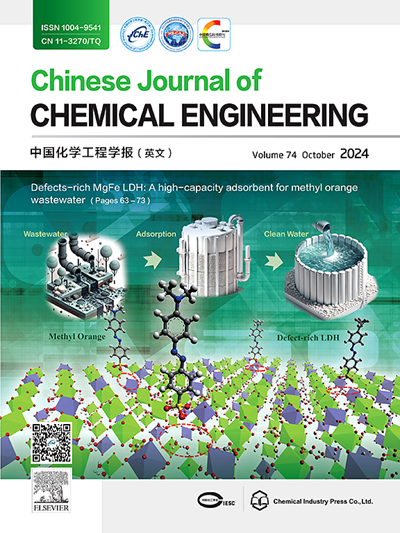Conformational changes of a complex of two oppositely charged polyelectrolytes on the surface of a polarized spherical metal nanoparticle
IF 3.7
3区 工程技术
Q2 ENGINEERING, CHEMICAL
引用次数: 0
Abstract
Using molecular dynamics modeling, the change in the shape and density of the macromolecular corona consisting of two oppositely charged polyelectrolytes, including those combined into one block copolymer, on the surface of a polarized spherical metal nanoparticle was studied. A mathematical model of the structure of the block copolymer chain adsorbed on a polarized spherical nanoparticle is presented for the cases of polyelectrolyte blocks of large and small length. Based on the modeling results, radial and angular distributions of the density of atoms of polyelectrolyte polypeptides adsorbed on the surface of a spherical nanoparticle were calculated depending on its dipole moment. As the dipole moment of the nanoparticle increased, the dense macromolecular shell was destroyed, forming caps of polyelectrolyte macromolecules or fragments of block copolymer of different types on the poles of the polarized nanoparticle. In this case, the macromolecular corona in the region of the poles of the polarized nanoparticle swelled the more strongly, the greater the distance between the charged links in the polymer.
极化球形金属纳米颗粒表面两种带相反电荷的聚电解质复合物的构象变化
利用分子动力学模型,研究了极化球形金属纳米颗粒表面由两种带相反电荷的聚电解质组成的大分子电晕的形状和密度变化。本文建立了极化球形纳米粒子上吸附的嵌段共聚物链结构的数学模型,适用于长度不同的聚电解质嵌段。在此基础上,计算了吸附在球形纳米颗粒表面的聚电解质多肽原子密度随其偶极矩的径向和角向分布。随着纳米粒子偶极矩的增大,致密的大分子外壳被破坏,在极化纳米粒子的两极形成不同类型的聚电解质大分子帽或嵌段共聚物片段。在这种情况下,极化纳米粒子两极区域的大分子电晕膨胀越强烈,聚合物中带电连接之间的距离就越大。
本文章由计算机程序翻译,如有差异,请以英文原文为准。
求助全文
约1分钟内获得全文
求助全文
来源期刊

Chinese Journal of Chemical Engineering
工程技术-工程:化工
CiteScore
6.60
自引率
5.30%
发文量
4309
审稿时长
31 days
期刊介绍:
The Chinese Journal of Chemical Engineering (Monthly, started in 1982) is the official journal of the Chemical Industry and Engineering Society of China and published by the Chemical Industry Press Co. Ltd. The aim of the journal is to develop the international exchange of scientific and technical information in the field of chemical engineering. It publishes original research papers that cover the major advancements and achievements in chemical engineering in China as well as some articles from overseas contributors.
The topics of journal include chemical engineering, chemical technology, biochemical engineering, energy and environmental engineering and other relevant fields. Papers are published on the basis of their relevance to theoretical research, practical application or potential uses in the industry as Research Papers, Communications, Reviews and Perspectives. Prominent domestic and overseas chemical experts and scholars have been invited to form an International Advisory Board and the Editorial Committee. It enjoys recognition among Chinese academia and industry as a reliable source of information of what is going on in chemical engineering research, both domestic and abroad.
 求助内容:
求助内容: 应助结果提醒方式:
应助结果提醒方式:


